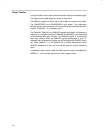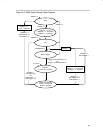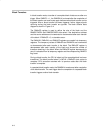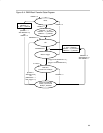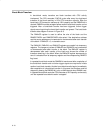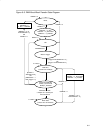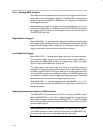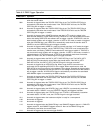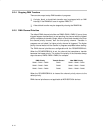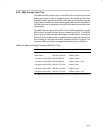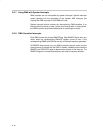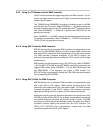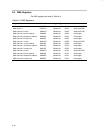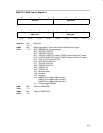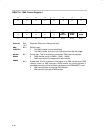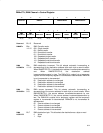
8-14
8.2.4 Stopping DMA Transfers
There are two ways to stop DMA transfers in progress:
- A single, block, or burst-block transfer may be stopped with an NMI
interrupt, if the ENNMI bit is set in register DMACTL1.
- A burst-block transfer may be stopped by clearing the DMAEN bit.
8.2.5 DMA Channel Priorities
The default DMA channel priorities are DMA0−DMA1−DMA2. If two or three
triggers happen simultaneously or are pending, the channel with the highest
priority completes its transfer (single, block or burst-block transfer) first, then
the second priority channel, then the third priority channel. Transfers in
progress are not halted if a higher priority channel is triggered. The higher
priority channel waits until the transfer in progress completes before starting.
The DMA channel priorities are configurable with the ROUNDROBIN bit.
When the ROUNDROBIN bit is set, the channel that completes a transfer
becomes the lowest priority. The order of the priority of the channels always
stays the same, DMA0−DMA1−DMA2, for example:
DMA Priority Transfer Occurs New DMA Priority
DMA0 − DMA1 − DMA2 DMA1 DMA2 − DMA0 − DMA1
DMA2 − DMA0 − DMA1 DMA2 DMA0 − DMA1 − DMA2
DMA0 − DMA1 − DMA2 DMA0 DMA1 − DMA2 − DMA0
When the ROUNDROBIN bit is cleared the channel priority returns to the
default priority.
DMA channel priorites are not applicable to MSP430FG43x devices.



